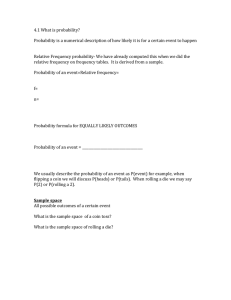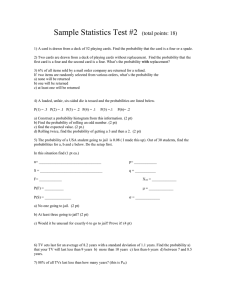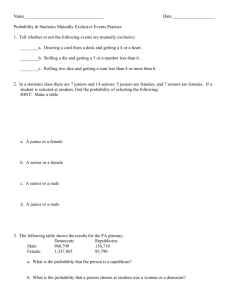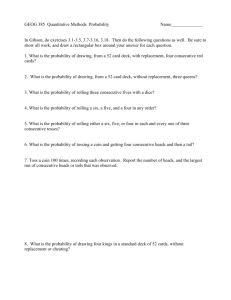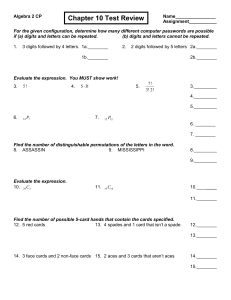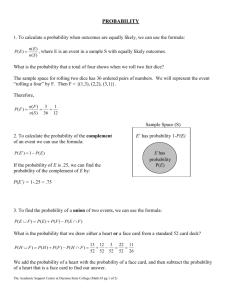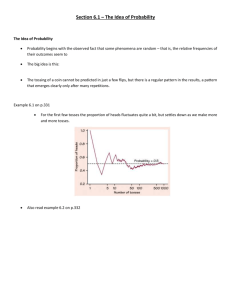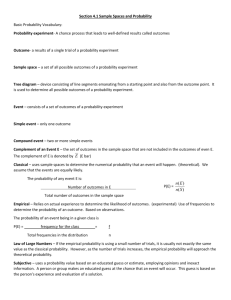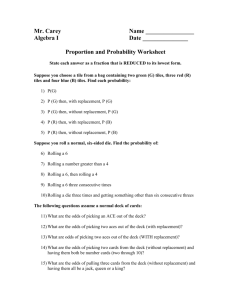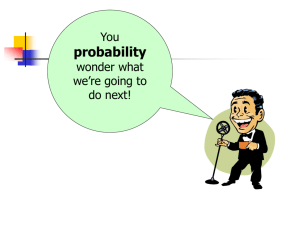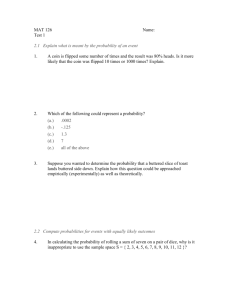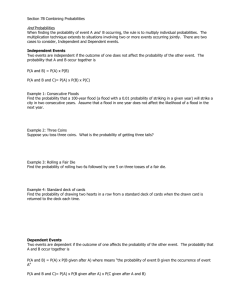Probability Reference Packet: Key Concepts & Examples
advertisement
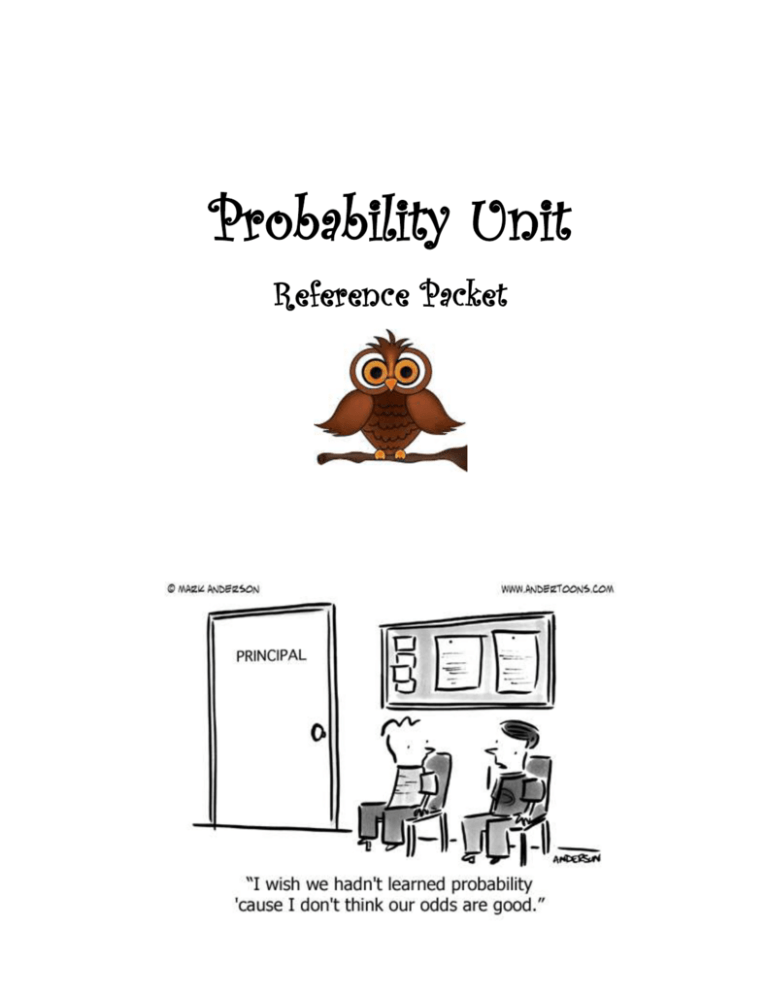
Probability Unit Reference Packet Probability: is the likelihood or chance of an event occurring. Sample Space: A set of all possible outcomes in the set Event: A subset of outcomes within the sample space. Probability Scale: A scale used to graph the probability of simple events. The scale can represent probabilities in the form of a fraction, decimal, or percent. The probability of an event is a number between 0 and 1. The greater the probability, the greater the chances the event will happen. If an event is impossible, the probability that it will occur is 0 or 0%. If an event is certain to happen, the probability that it will happen is 1 or 100%. Types of Probability: Theoretical Probability is what should happen when you perform an experiment. P(event) # of favorable outcomes total # of possible outcomes Example: Rolling a number cube. P (odd ) 3 1 6 2 Experimental Probability is what happens when you actually perform the event. P(event) Example: Flipping a coin 4 times. # of times the event occurs total # of trials Trial 1 Trial 2 Trial 3 Trial 4 H T T T P ( heads ) 1 4 Simulation: an experiment that is designed to model the action in a given situation. They often use models to act out an event that would be impractical to perform. Probability Using a Deck of Cards: There are 52 cards in a standard deck of cards. o Two colors in a deck o 26 black cards 26 red cards Each suit consists of number cards (ace – 10) and face cards: Suits: Face cards: 13 diamonds 4 Queens 13 hearts 4 Kings 13 spades 4 Jacks 13 clubs Events in probability: COMPLEMENT OF AN EVENT: “The chance of all of the other outcomes”. Example: What is the probability when rolling a number cube? The event of this probability is rolling a The complement of this probability would be the chance 5 or a 6: of not getting a 5 or 6. P(5 or 6) = 2 6 1 =3 P(not a 5 or 6) = 4 6 2 =3 Notice the sum of their probabilities equal 1. P(5 or 6) + P(not 5 or 6) = 1 + 2 = 3 = 1 3 3 3 Compound Events: An event that is made up of two or more simple events Sample Space: is the set of all possible outcomes in an event or an experiment. A sample space is written in a list. Tree Diagram: is an illustration of all of the possible outcomes in an experiment. Fundamental Counting Principle: states that if one event has m possible outcomes and a second event has n possible outcomes, then there are mn total possible outcomes for the two events together. Example: Below shows all the possible outcomes for flipping a coin then rolling a number cube. Tree Diagram Sample Space H1 T1 H2 T2 H3 T3 H4 T4 H5 T5 H6 T6 Counting Principle 2 x 6 = 12 The Fundamental Counting Principle determines the number of possible outcomes (size of sample space) Two Types of Compound Events: 1) Independent Events: is when the result of the first event does not affect the result of the second event. EXAMPLES: Choosing a marble from a jar AND landing on heads after tossing a coin. Choosing a 3 from a deck of cards, replacing it, AND then choosing an ace as the second card. Selecting one month of the year AND one day of the week. Rolling a 4 on a single 6-sided die, AND then rolling a 1 on a second roll of the die. 2) Dependent Events: When the result of the first event affects the result of the second event. EXAMPLES: A money bag contains 2 nickels, a penny, and 4 dimes. A dime is chosen and then, without replacing the dime, a penny is chosen. A bowl of fruit is on the table. It contains 6 apples, 5 oranges, and 4 bananas. Brandon and Connor come home from school and randomly grab one fruit each. The names of 8 boys and 12 girls from a class are put into a hat. Two names are randomly chosen. A card is chosen at random from a standard deck. Without replacing it, a second card is chosen. Finding the probability of independent or dependent events: Marbles in a bag 5 blue, 3 red, 2 yellow Independent Event Find P (blue, then a blue) if the marble is replaced. Dependent Event Find P (blue, then a blue) if the marble is not replaced. P (blue) ∙ P (blue) P (blue) ∙ P (blue) 5 5 ∙ 10 10 5 4 ∙ 10 9 25 100 = 25% 20 90 2 = 229% Careful: If it is an “or” statement, add the probabilities instead of multiplying them!
